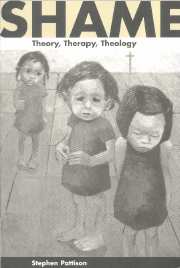Book contents
- Frontmatter
- Contents
- Preface
- Introduction
- PART I APPROACHING SHAME
- PART II ENCOUNTERING SHAME
- Overview of Part II
- 3 The ecology of shame
- 4 Chronic shame
- 5 Some effects and implications of chronic shame
- 6 Aspects of the socio-historical significance of shame
- 7 Dealing with shame: the task of integration
- Summary: towards a working understanding of shame
- PART III SHAME AND CHRISTIANITY
- Epilogue
- Bibliography
- Index
Overview of Part II
Published online by Cambridge University Press: 05 June 2012
- Frontmatter
- Contents
- Preface
- Introduction
- PART I APPROACHING SHAME
- PART II ENCOUNTERING SHAME
- Overview of Part II
- 3 The ecology of shame
- 4 Chronic shame
- 5 Some effects and implications of chronic shame
- 6 Aspects of the socio-historical significance of shame
- 7 Dealing with shame: the task of integration
- Summary: towards a working understanding of shame
- PART III SHAME AND CHRISTIANITY
- Epilogue
- Bibliography
- Index
Summary
In the first part of this book, some of the methodological and other issues associated with approaching shame were considered. A picture of great diversity in both perspective and understanding was presented. A family resemblance approach to discourses relating to shame was suggested as a device for drawing upon different perspectives and insights with discernment and integrity.
Part II examines aspects of the phenomenology, experience and healing of shame, particularly chronic, dysfunctional shame, in contemporary Western cultures. Within this particular cultural context, shame is often regarded primarily as an individual, psychological phenomenon. Many of the main discourses that are drawn upon, therefore, explore shame in these terms. It will, however, be seen that shame has substantial social and political implications. Discourses relating to the social arena therefore have a part to play in understanding this phenomenon. Integration is a key concept when it comes to describing positive responses to shame whether at an individual or a social level of existence.
Chapter 3 below provides preliminary orientation to a number of issues pertaining to understanding shame in general. It begins by identifying the main features, or family characteristics, that people usually associate with ‘shame’ when they use it to describe their experience. Having outlined a range of basic meanings characteristic of individuals' experiences of shame, some of the possible functions of shame are discussed. Thereafter, some basic distinctions between different kinds of shame, functional and dysfunctional, are identified. Finally, I offer some discussion of the metaphorical ecology of stain, pollution and defilement within which understandings of shame might be situated.
- Type
- Chapter
- Information
- ShameTheory, Therapy, Theology, pp. 66 - 68Publisher: Cambridge University PressPrint publication year: 2000



